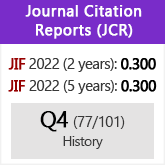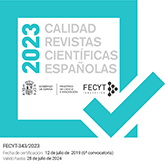Historical Intimacy in Malay Urban Core Configurations: A Comparative Analysis
DOI:
https://doi.org/10.3989/chdj.2020.020Keywords:
Preservation, Built forms, Urban design, Malay character of cities, Redevelopment, Organic patternsAbstract
This paper analyses the historical pre-Colonial configurations of a series of urban cores in Malay sites along the Straits of Melaka. The objective of this research is to identify the pattern and variations of each pre-Colonial royal urban core from the perspective of urban design principle such as “intimacy” and “walkability,” which can affect in a long term sustainable parameters such as the reduction of “urban heat island”. This traditional character is increasingly disappearing due to urbanisation. There is a difficulty to reconstruct the urban core of these case studies because of their past layouts’ degree of organic character, particularly in terms of randomness. This paper argues that such configurations reflect the degree of “intimacy,” which was ruptured during the Colonial eras. Patterns were identified using available maps and lithography related to the case studies. The findings indicate that the Malay royal urban core does obey the urban design principles of intimacy and walkability. The “intimacy indices” for a historical Malay city are as follow: distance from palace to mosque (170 metre), padang/open spaces (130 metre), settlement (310 metre), market (195 metre), and aristocrat houses (60 metre). This finding can be used to inform the baseline for the preparation of the Malay principles guidelines.
Downloads
References
Abdul Aziz, Zul Arri and Idid, Syed Z. A. (2010). "The Islamic Malay traditional towns learning through the attributes special emphasis on Johor Bahru, Malaysia". First International Conference for Urban & Architecture Heritage Countries: Its Role in Culture & Economic Development, pp. 1-20.
Borden, Iain, Rendell; Jane, Kerr, Joe and Pivaro, Alicia (2001). The Unknown City: Contesting Architecture and Social Space. MIT Press. https://doi.org/10.7551/mitpress/7008.001.0001
de Koninck, Rodolphe (1988). "Alor Setar, the Capital of Kedah : a City to Govern Agriculture". Archipel, 36(1), pp. 147-164. https://doi.org/10.3406/arch.1988.2449
Dekkers, Wim (2011). "Dwelling, house and home: towards a homeled perspective on dementia care". Medicine, Health Care, and Philosophy, 14(3), pp. 291-300. https://doi.org/10.1007/s11019-011-9307-2 PMid:21221813 PMCid:PMC3127020
Harun, Nor Zalina (2008). Role and fate of Padang in Malaysian historical cities. 5th Great Asian Street Symposium 2008, Singapore pp. 1-13.
Harun, Siti N. and Jalil, Rusamah Abdul (2014). "The History and Characteristics of Malay Early Towns in Peninsular Malaysia". Asian Journal of Humanities and Social Studies, 2(3), pp. 403-409. Retrieved from www.ajouronline.com [Accessed 30/January/2019]
Jahn Kassim, P. Shireen; Ibrahim, Ilyani; Harun, Nor Zalina and Kamaruddin, Kamariah (2018). "Ecological Urbanism in the Tropics Studies on the Sustainable Dimensions of Malay Traditional Urban Centers". International Journal of Engineering & Technology, 7(3.9), pp. 93-99. https://doi.org/10.14419/ijet.v7i3.9.15285
Milner, Anthony C. (2011). The Malays. Chichester: Wiley-Blackwell.
Nasir, Abdul Halim and Teh, H. H. (1997). Warisan seni bina Melayu. Bangi: Universiti Kebangsaan Malaysia.
Nasir, Abdul Halim. (1990). Kota-kota Melayu. Percetakan Dewan Bahasa dan Pustaka.
Reid, Anthony and Ito, Takeshi (2016). "A Precious Dutch Map of Aceh, c . 1645". Archipel, 57(2), pp. 191-208. https://doi.org/10.3406/arch.1999.3524
Smith, Michael E. (2007). "Form and Meaning in the Earliest Cities: A New Approach to Ancient Urban Planning". Journal of Planning History, 6(1), pp. 1-47. https://doi.org/10.1177/1538513206293713
Sunaryo, Rony Gunawan (2013). "Morphological Study of Colonial and Traditional Urban Space in Java : A Comparative Study of Ten Cities". 1st Biennale - International Conference on Indonesian Architecture and Planning Morphological, (December). https://doi.org/10.9744/dimensi.40.2.77-88
Windari, Sri (2017). "Kesultanan Langkat di Sumatera Utara Pada Masa Sultan Abdul Aziz (1827-1927 M)". Jurnal Sejarah Peradaban Islam, 1(1), pp. 29-47.
Winstedt, Richard O. (1934). A History Of Perak. Malayan Branch of the Royal Asiatic Society, Singapore.
Wiryomartono, Bagoes (2011). "Urbanism in the Malay World: The Origin and Evolution of the Idea, Function, and Institution of Pre-colonial Bandar Melaka". The 5th International Conference of the International Forum on Urbanism (IFoU) 2011 National University of Singapore, Department of Architecture Global Visions: Risks and Opportunities for the Urban Planet, pp. 1-10.
Wiryomartono, Bagoes (2014). "Urbanism, place and culture in the Malay world: The politics of domain from pre-colonial to post colonial era". City, Culture and Society, 4(4), pp. 217-227. https://doi.org/10.1016/j.ccs.2013.05.004
Yahya, A. (1998). The Kampong. The Encyclopedia of Malaysia -Architecture, Archipelago Press, Kuala Lumpur, Malaysia.
Published
How to Cite
Issue
Section
License
Copyright (c) 2021 Consejo Superior de Investigaciones Científicas (CSIC)

This work is licensed under a Creative Commons Attribution 4.0 International License.
© CSIC. Manuscripts published in both the printed and online versions of this Journal are the property of Consejo Superior de Investigaciones Científicas, and quoting this source is a requirement for any partial or full reproduction.All contents of this electronic edition, except where otherwise noted, are distributed under a “Creative Commons Attribution 4.0 International” (CC BY 4.0) License. You may read here the basic information and the legal text of the license. The indication of the CC BY 4.0 License must be expressly stated in this way when necessary.
Self-archiving in repositories, personal webpages or similar, of any version other than the published by the Editor, is not allowed.
Funding data
Ministry of Higher Education, Malaysia
Grant numbers TRGS16-03-002-00002
International Islamic University Malaysia
Grant numbers TRGS16-03-002-00002

















